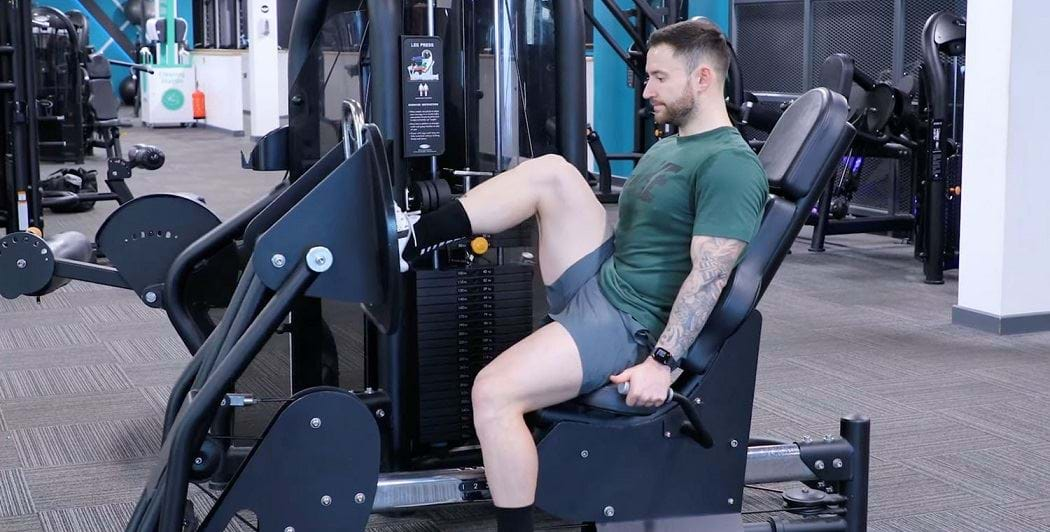Single Leg Press
What Is A Single Leg Press?

The single leg press is a variation of the seated leg press that challenges one leg at a time. Single leg or unilateral training uses a lighter load but is helpful for addressing muscular imbalances, improving stability, and increasing overall lower body strength.
Most people can also achieve a greater depth with single leg press variations, allowing the muscles to be strengthened through a greater range of motion. The single leg press also places a greater demand on the core to keep the torso rigid and prevent the body from twisting.
Another single leg press variation is the alternating single leg press. This alternates reps from each side, allowing a longer rest between each rep. If you struggle with endurance on single leg presses, this can be a good way to increase the volume while getting the benefits of the single leg press. We've covered instructions for both on this page.
Commonly Asked Questions On Single Leg Presses
The single leg press is good for building quad, glute, hamstring, and calf strength and stability, as well as improving muscular imbalances between the two sides.
The single leg press requires greater stability than the bilateral leg press, making it a more challenging variation. As a result, you’ll likely find you can press less than 50% of the weight of your standard leg press.
The single and double leg press are both good exercises to include in your training programme. Single leg press can be better for strengthening the stabilising muscles, while the bilateral leg press exposes the muscles to greater load. Including both will allow you to build strength and stability while reducing the risk of injury.
Single Leg Press Tips
It's important to keep the back flat against the support and hips square throughout the single leg press to keep tension on the working leg and reduce tension on the lower back. If you find your torso twists even when engaging the core and using the handles, lower the weight. Make sure to also choose a weight where you can keep the entire foot planted throughout, and prevent the knee from caving in.
If you're new to single leg pressing, it may be best to first master the alternating leg press. This variation allows for each leg to do alternative reps and allows the performer to become familiar with the unilateral movement while allowing each leg to have a short rest after each rep.
How To Do A Single Leg Press
Adjust the seat so that your knees are at least at a 90-degree angle when your back is flat against the support.
Place both feet shoulder width apart on the plate, then remove one foot and plant flat on the floor.
Grip the handles and engage the core, then drive through your foot and push the plate until your leg is fully extended with a soft knee.
Take a short pause before slowly lowering back to the start by bending at the knee.
Repeat for desired reps before switching to the other leg.
How To Do Alternating Single Leg Press
Adjust the seat so that your knees are at least at a 90-degree angle when your back is flat against the support.
Place both feet shoulder width apart on the plate, then remove one foot and plant flat on the floor.
Grip the handles and engage the core, then drive through your foot and push the plate until your leg is fully extended with a soft knee.
Take a short pause before slowly lowering back to the start by bending at the knee.
Swap legs and repeat on the other side.
Make sure to start on your weaker leg.
If you’re not sure if any of the above exercises are suitable for you, please consult your doctor before you start it. Need guidance on how to perform the exercise? Ask a personal trainer at your gym.